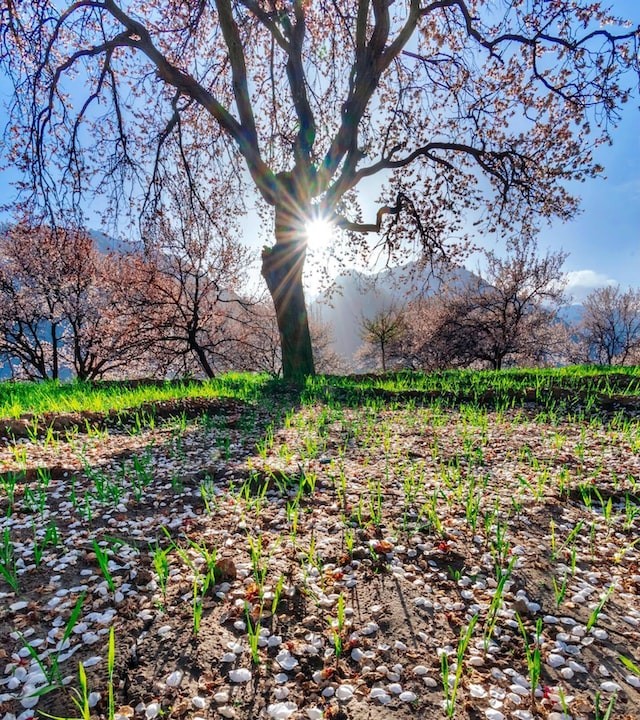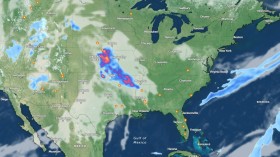For the first time, an international team of researchers, including University of Copenhagen researchers, has documented the critical role of vegetation in Arctic warming.
The new findings allow us to make more precise climate predictions, though the researchers note that current models are still flawed.
Arctic vegetation has a major impact on warming
 (Photo : Jessica Anderson/Unsplash)
(Photo : Jessica Anderson/Unsplash)

The Arctic is warming three times faster than the rest of the world. Melted terrain absorbs heat into the earth's surface where snow and ice are used to reflect sunlight back into the atmosphere, as per ScienceDaily.
There has long been debate about the impact of vegetation emerging from melting snow on warming in comparison to other factors such as snow, precipitation, cloud cover, and geographic location.
Numerous studies have already demonstrated the importance of greenhouse gas emissions in Arctic ecosystems, such as CO2 and methane.
Fewer studies have been conducted on the impact of vegetation on Arctic climates.
An international research team has become the first to document the critical role of vegetation in Arctic warming, using new analyses of data collected at 64 Arctic sites between 1994 and 2021.
The researchers compared fifteen factors that affect the "surface energy budget" (SEB), which describes how solar energy is converted when it hits the earth's surface.
The researchers investigated how different Arctic environments, such as barren tundra, peat bogs, shrub-covered tundra, and wetlands, influence how solar energy is converted.
The findings show that some of the greatest differences in energy conversion occur between dry areas with little vegetation, where grasses and lichens typically grow, and wet areas rich in mosses, shrubs, and small trees, such as peat bogs.
Because the energy from wet areas is converted into evaporation, dry soil surfaces produce more warming than wet areas.
Several studies have found that the Arctic is becoming greener as temperatures rise due to arctic amplification.
Because this causes more vegetation to emerge, understanding how vegetation reacts to sunlight and affects warming is critical for climate predictions.
The researchers contributed new and important knowledge here.
The findings of the researchers also highlight the possibility of improving our current predictions of how the climate will evolve. Current knowledge is shaky, and more data collection is required to solve this complex puzzle.
Read more: Giant Viruses Found Infecting Microscopic Algae in a Rare Arctic Lake
Warming Temperatures Are Driving Arctic Greening
Climate change is expected to cause vegetation shifts because rising temperatures favor taller, denser vegetation, allowing forests to expand into arctic tundra and tundra to expand into polar deserts, as per Greenfacts.
The timing of these shifts will differ across the Arctic.
Changes are likely to be visible in this century where suitable soils and other conditions exist.
Where they do not, expect the changes to take longer.
These vegetation changes, combined with rising sea levels, are projected to reduce tundra area to its lowest extent in at least 21 000 years, significantly reducing breeding areas for many birds and grazing areas for land animals that rely on the open landscape of tundra and polar desert habitats.
Not only are some threatened species likely to become extinct, but some currently common species are expected to decline dramatically.
Many of the adaptations that allow plants and animals to survive in this cold climate also limit their ability to compete with invading species that are responding to climate change.
The rapid rate of projected climate change also poses special challenges to the ability of many species to adapt.
As a result, it is expected that the primary response of arctic plants and animals to warming will be relocation.
As southern species shift their ranges northward, sometimes by 1000 kilometers, they are very likely to displace some arctic species (whose northward shifts are hindered by the Arctic Ocean).
Some bird, fish, and butterfly species have already begun to shift their ranges.
Seabirds, mosses, and lichens are among the species that are expected to decline as temperatures rise.
The Arctic is a global biodiversity hotspot for mosses and lichens, with 600 species of mosses and 2000 species of lichens, more than anywhere else on the planet.
Related article: Can "Refreezing" Arctic Ice Reverse the Effects of Climate Change?
© 2024 NatureWorldNews.com All rights reserved. Do not reproduce without permission.



![Roundworms with Short Memories 'Stop Forgetting' When Frozen or Given Lithium [Study]](https://1471793142.rsc.cdn77.org/data/thumbs/full/70295/280/157/50/40/roundworms-with-short-memories-stop-forgetting-when-frozen-or-given-lithium-study.jpg)

